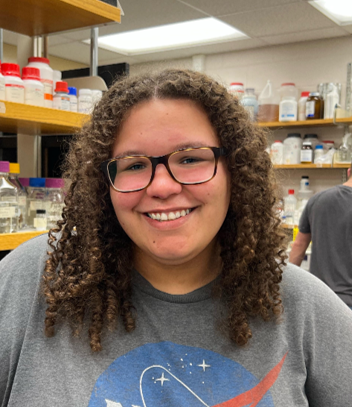
"Understanding membrane protein topology to unlock cellular functions"
Mutations and mis regulation of the vital membrane protein, Caveolin-1, has been linked to various disease states such as cancer, diabetes, and Alzheimer’s. Caveolin-1 (Cav-1) is an integral membrane protein proposed to adopt a U-shaped conformation that plays a crucial role in how cells communicate through chemical signals and how the plasma membrane forms. The role that Cav-1 plays in these cellular processes is not well characterized due to a lack to atomic-level structural information. While protein NMR has characterized the secondary structure (local folding pattern of amino acids into helices, sheets, and coils) of a truncated portion of Cav-1, the N-terminal domain remains uncharacterized. The N-terminal domain plays vital roles in facilitating the proper insertion of Cav-1 into the plasma membrane and is involved in post-translational modifications that may play a role in mis regulation of Cav-1 leading to various disease states. Additionally, further structural insights into the U-shaped conformation of Cav-1 are required to understand the role it plays membrane organization. To further elucidate the structure of Cav-1 we combined experimental de novo FRET (Förster Resonance Energy Transfer) distance measurements with molecular dynamics simulations. We show that it is more probable for Cav-1 to adopt a tight U-shaped conformation between the central helices versus the hypothesized open conformation. This provides a more detailed understanding of Cav-1’s intramembrane structure and a framework for further investigation of the role this conformation may play in membrane organization. Additionally, we are designing a method using native chemical ligation to selectively isotopically label the N-terminus of Cav-1. This will allow us to use protein NMR to characterize the secondary structure of the N-terminal domain, while eliminating truncation induced biases and dramatically decreasing spectral overlap. This work establishes a detailed structural framework for Cav-1, shedding light on its functional role in membrane organization and providing a foundation for investigating its contributions to disease pathology.
